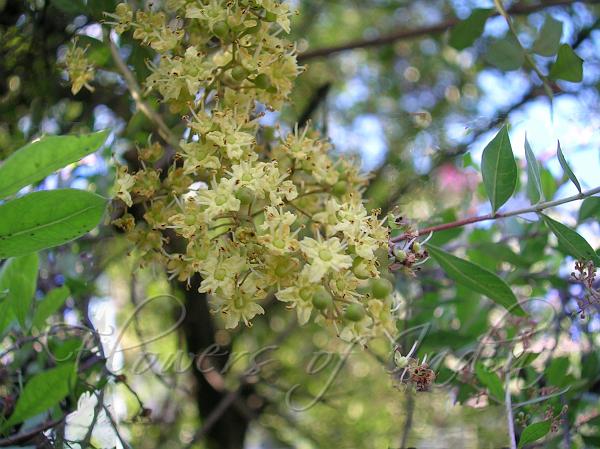|
| Henna |
|

|

| File size | 508767 |
| Original date | 7/30/06 5:33 PM |
| Resolution | 2048 x 1536 |
| Flash | Flash did not fire, auto |
| Focal length | 8.0mm |
| Exposure time | 1/94s |
| Aperture | 3.2 |
| Focus Distance | |
| Metering Mode | Partial |
| Camera make | NIKON |
| Camera model | E3700 |
| Sensor type |
|
|
|
Photo: |
Botanical name: Lawsonia inermis Family: Lythraceae (Crape Myrtle family)
Henna, or Menhdi as it is called in Hindi, is a symbol of festivity in
India. It is especially associated with marriage in north India.
Its leaves produce the henna or alhenna of the Arabs (cyprus of the ancients),
a yellow die which is used in Egypt and elsewhere by women to color their
nails, and by men to die their beards, and for other similar uses including
horses manes and tails. Henna is a tall shrub or small tree, standing
6-25 ft tall. It is hairless and multi-branched,
with spine-tipped branchlets. The leaves grow opposite each other on the
stem. They are hairless, nearly-stalkless, elliptical, and lanceshaped,
1.5-5.0 x 0.5-2 cm on the average, tapering, and have depressed veins on
the underside. Henna flowers have four sepals and a 2 mm sepal-cup tube,
with 3 mm spread sepals. Its petals are ovate, with white or red stamens.
Henna fruits are small, brownish capsules, 4-8 mm in diameter.
Henna is native to East Africa, Arabian Peninsula, Pakistan to India.
| Identification credit: Radhika Vathsan | Photographed at Tungareshwar Wildlife Sanctuary, Maharashtra. |
• Is this flower misidentified? If yes,